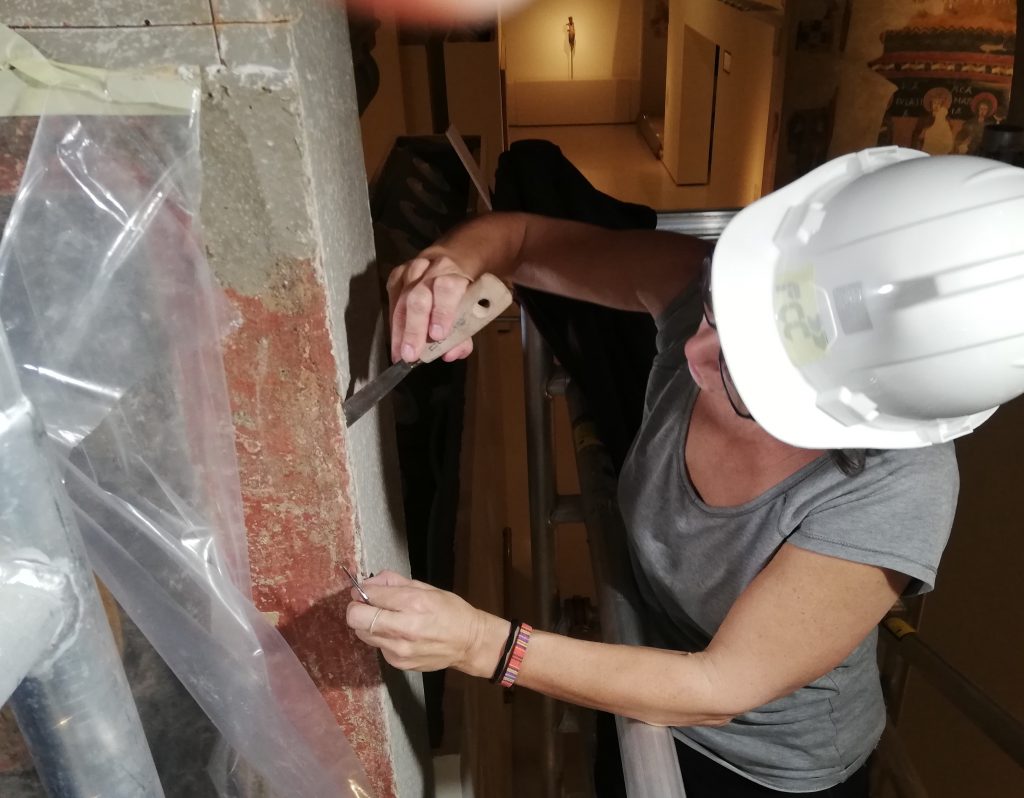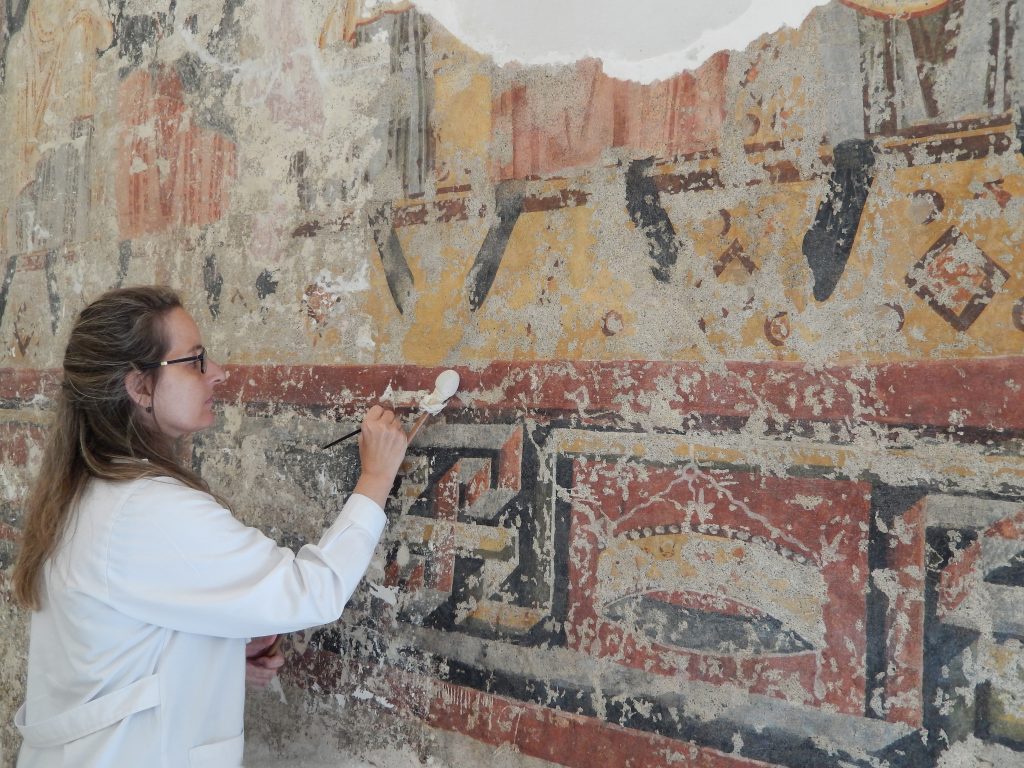As of this May, the Museum will begin work to incorporate fragments of wall painting that have been preserved until now iinthe storage rooms of Sant Climent de Taüll, Sant Pere del Burgal and Sant Joan de Boí . Once completed, these works will complete in a very significant way the current reading of some sets that are the heart of the National Museum’s collection.
The Museum’s technical teams have worked in an interdisciplinary way to recover these fragments and have been able to identify, study and restore them. Once their original location has been determined, they will gradually be incorporated into the rooms in an operation that will end in September.
In the cases of Sant Climent de Taüll and Sant Pere del Burgal, it is the incorporation of very relevant and large figures, which will significantly complete the reading of these sets, either because they are fragments of considerable dimensions or because the iconographic representation itself is preserved very intact, as is the case with the figure of Cain, from the apse of Sant Climent de Taüll. In the case of Sant Joan de Boí, fragments of the decoration of the paintings that were located on the columns of the church will be incorporated.
The inclusion of these paintings in the rooms open to the public has entailed complex and long-lasting preliminary actions: the study of the fragments, their history and location, the consolidation and cleaning of the materials, the preparation of casts of the images for checking their fit and carrying out chemical analyzes of the materials that provide information on the nature of the pigments as well as unpublished data on the execution process of the paintings that the medieval masters used to make them and, finally, the rereading of the most complete set.
When it is 900 years since the consecration of the churches of Sant Climent and Santa Maria de Taüll and in the context of the centenary of the rediscovery, removal and museumization of the wall paintings, as well as the formation of the main core of the current collection of Romanesque art, the National Museum has started a series of projects, of various formats and dimensions, which, due to the complexity and special characteristics of this unique set of works, will extend over a three-year cycle, from 2023 to 2025.


